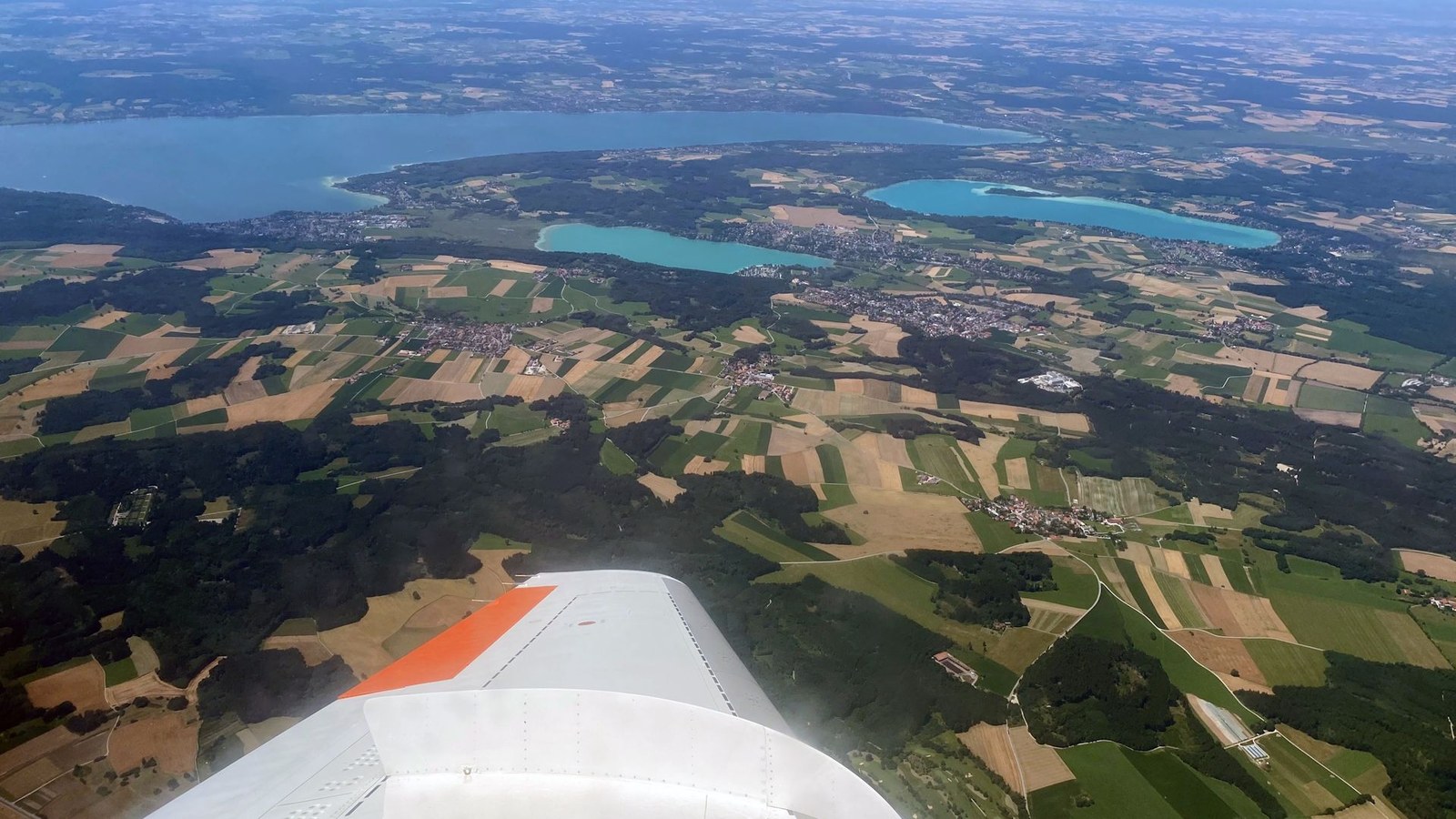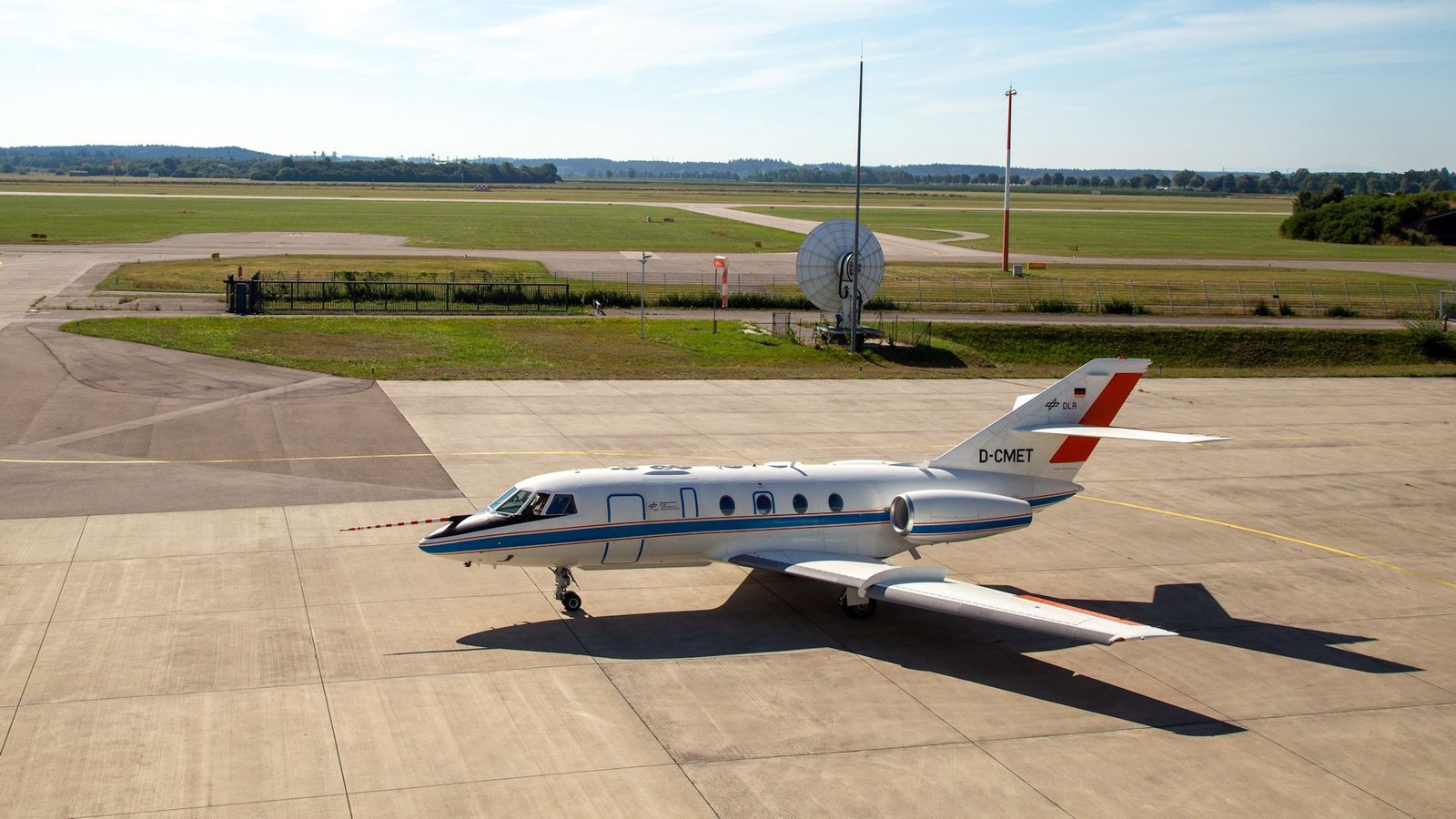LDACS – radio communications for future air transport
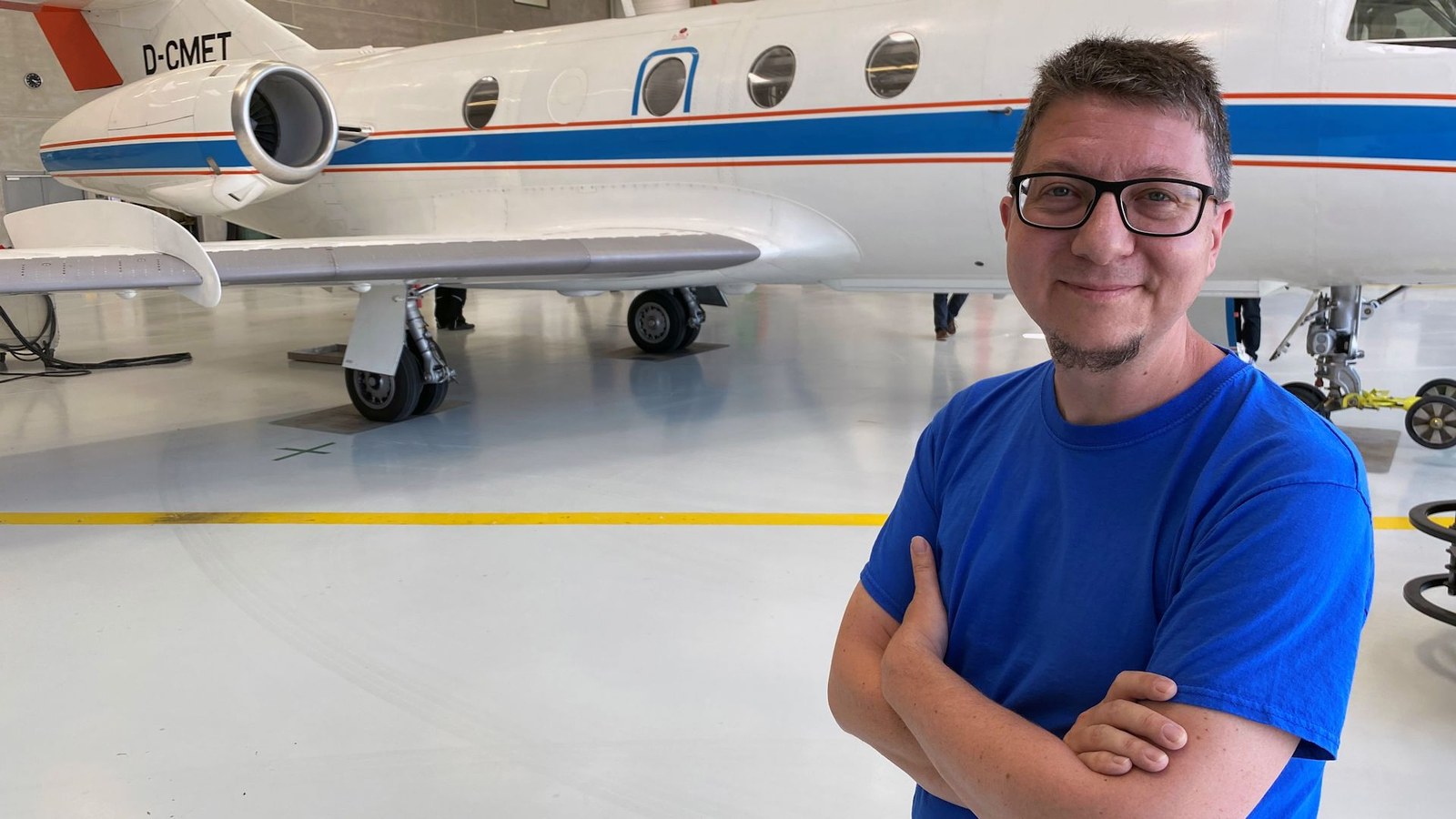
We’re travelling at 700 kilometres per hour, more than 10,000 metres above the ground. Munich’s Theresienwiese, a large area dotted with white tent structures, stretches out below. Again and again, one of the many lakes around Oberpfaffenhofen comes into view. The Falcon aircraft operated by the German Aerospace Center (Deutsches Zentrum für Luft- und Raumfahrt; DLR) flies in a large loop past Munich before returning to the Oberpfaffenhofen site.
Today, the Falcon is simulating a standard aircraft flying cargo or passengers from A to B. When pilots Michael Großrubatscher and Philipp Weber make contact with Munich and Oberpfaffenhofen airports, they use the technology that has been employed at all airports and in all aircraft since the 1940s – analogue voice radio. In the rear passenger cabin, however, the future of digital communications between ground and air is taking place, in the form of the L-band Digital Aeronautical Communications System (LDACS).
Technology on the home straight
The newly developed receiving and transmitting station is installed in the experiment rack in the cabin. Daniel Mielke of the DLR Institute of Communications and Navigation and Stefan Kurz of Austrian company Frequentis monitor whether and to what extent the large amounts of data transmitted from the ground are received via the antenna on the underside of the aircraft and processed in the radio system. The idea for digital communication was first mooted at DLR around 10 years ago and has been the subject of research and development activities ever since.
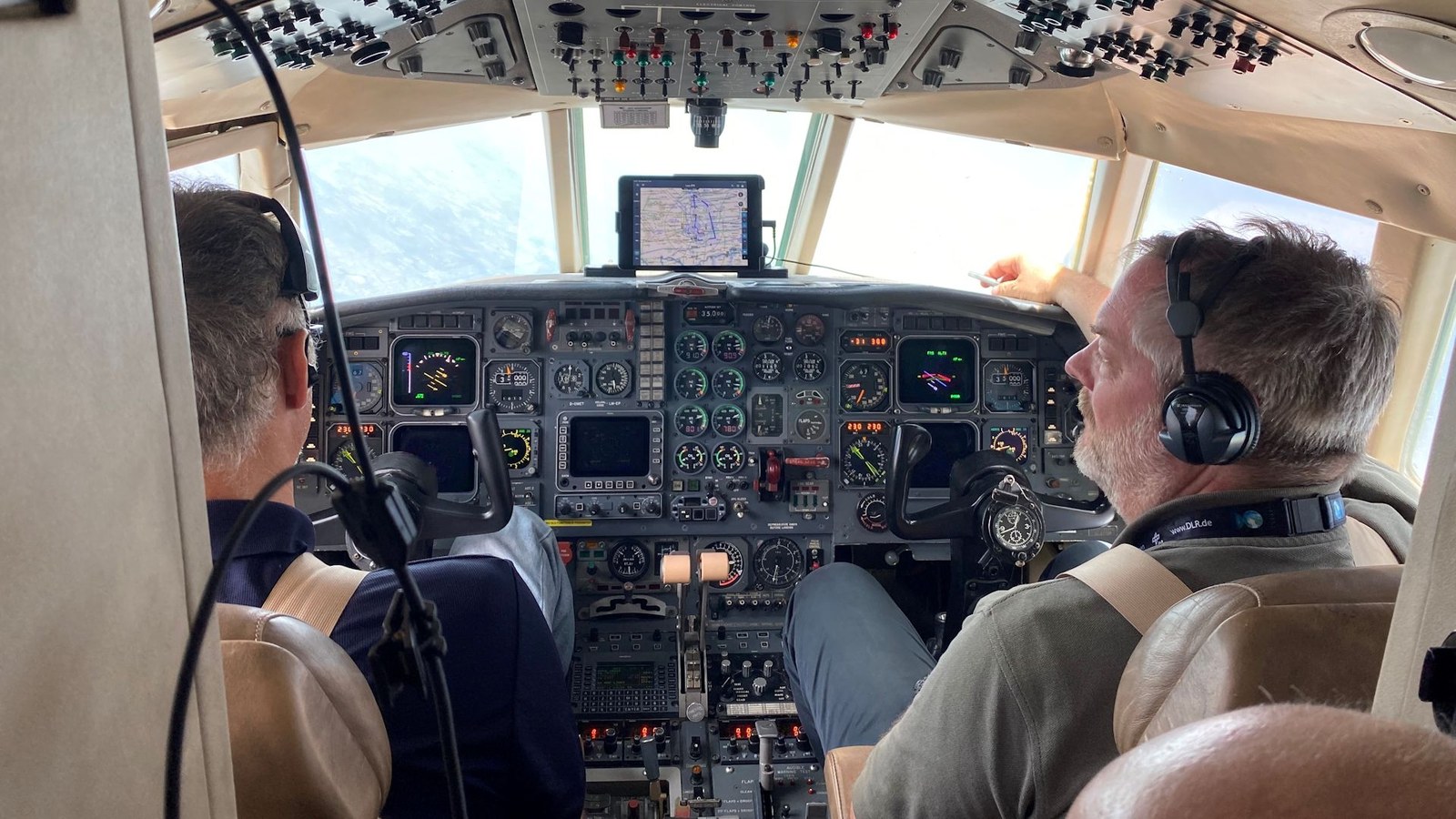
Now, in cooperation with industry partners, the system is nearing the finish line in a two-week flight campaign. LDACS is to prove to the International Civil Aviation Organization (ICAO) that it is a standardised communication system that airlines will be able to use reliably in future for tasks such as exchanging data between pilots and air traffic controllers. Given the increase in air traffic, this is urgently required: “The number of frequencies is limited and will no longer be sufficient,” says Project Manager Thomas Gräupl of the DLR Institute of Communications and Navigation. “Analogue radiotelephony cannot keep up in terms of quality and efficiency.” LDACS, on the other hand, uses the technology that is also used in mobile communications, albeit modified for use in aeronautical radio. The airlines have the need, so LDACS must now be made ready to move from research via industry to the market.
Communication with zeros and ones
Little is happening on Daniel Mielke’s screen at the moment. Normally, the reception quality is visible as high peaks on a spectrum, but right now the display is stationary. “We are just flying into the shadow of the antenna,” he says to Stefan Kurz. Kurz nods; his displays are telling him the same thing. There is no reason to doubt the LDACS system. The Falcon is about to turn in a curve, so the antenna mounted under the belly of the aircraft no longer has ‘eye contact’ with the antenna that the team set up on the roof of a building at the DLR site. In a realistic application, the transmission power of this antenna would be significantly higher. “The issue is that we are close to busy Munich Airport, plus there is the fact that other institutes are also working on site with their antennas. We cannot disturb either of them with a strongly radiating temporary antenna.”
The screens are not always so quiet, though. At one point, the entire spectrum jumps up because another, unknown transmitter appears to be interfering in or near the L-band. The closer the Falcon comes to the DLR site in Oberpfaffenhofen, the better the reception quality of the aircraft antenna and the data delivery of the communications radio should be. Yet the high speed at which the research aircraft flies over the transmitting antenna on the ground causes the Doppler effect – the compression or expansion of the signal. Both of these challenges need to be solved for LDACS, but the potential benefits are huge. The digital communication system will offer the possibility of quickly transmitting not only speech, but also text and images, and it can be used to pinpoint the precise position of the aircraft. “We use zeros and ones – in digital communication it does not matter whether the transmitted data is audio or video or instructions from controllers,” explains Mielke.
The laboratory as a ground station and aircraft control tower
The Institute’s laboratory is the ground-based counterpart to the Falcon in the air. Leonardus Jansen sits there while the research aircraft circles Oberpfaffenhofen. The Dutchman is a computer scientist specialising in cybersecurity and network traffic. His workspace simulates the ground station and the air traffic controller’s station in the tower, so he is surrounded by racks with vast quantities of cables and connectors. A screen displays the Falcon’s position with millisecond accuracy. Jansen has invested many months of work in developing software that is compatible with all internet protocol standards. On the coming flights in the two-week test campaign, this software will send and receive large amounts of data to simulate scenarios such as a high volume of air traffic. Jansen will also test a chat application developed at the Institute so that he can still communicate with colleagues on the aircraft long after mobile phone reception has ceased. The other members of the team have already left for the area around Oberpfaffenhofen Airport to coincide with the Falcon’s flight. They help to validate the technology by recording the LDACS signals from different locations. The data recordings from the ground are also used to research how precisely the LDACS signal can be used to determine the aircraft’s position.
Expertise across disciplines and countries
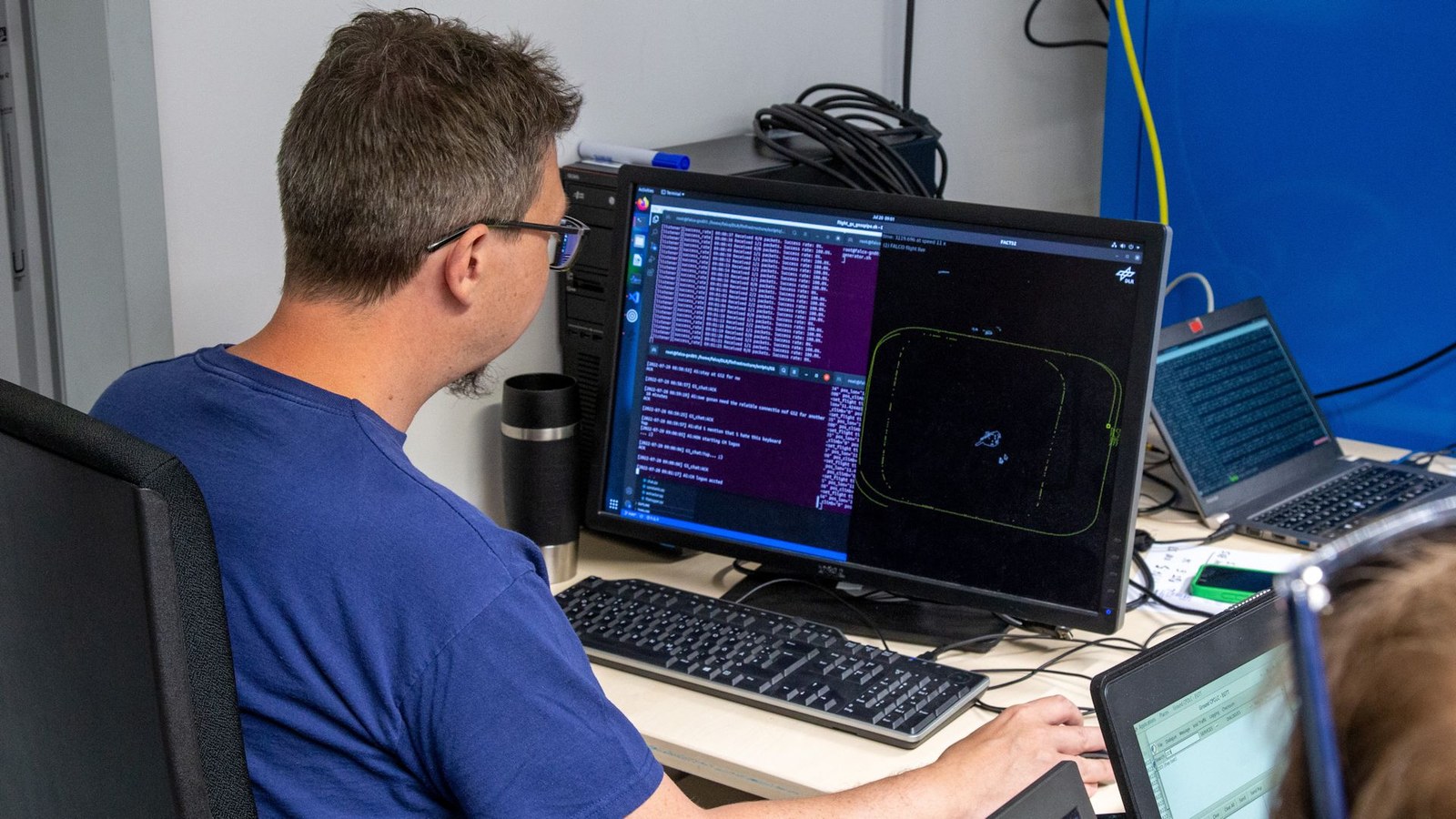
The LDACS team is interdisciplinary and international. Computer scientist and mathematician Thomas Gräupl worked on LDACS for his dissertation and is now in charge of the project at DLR. Electrical engineer Michael Schnell is in charge of the standardisation activities on LDACS within the ICAO framework. Daniel Mielke, who is studying for a doctoral degree, is also an electrical engineer: “with a large helping of software development for data acquisition and analysis,” he says. Leonardus Jansen and Nils Mäurer are computer scientists who have developed the software for the experiment. Alexandra Filip-Dhaubhadel, Ayten Gürbüz, Dennis Becker, Miguel Bellido-Manganell and Lukas Schalk are all electrical engineers. They built, tested and operated the aircraft’s on-board systems and the ground stations, and conducted frequency planning to ensure compatibility with other radio systems. Kazuyuki Morioka is a visiting scientist from the Electronic Navigation Research Institute (ENRI) in Japan. He is assisting with the worldwide validation of the LDACS standard. The researchers come from Austria, Germany, the Netherlands, Romania, Turkey, Spain and Japan.
Landing approach to Oberpfaffenhofen
After 90 minutes, the Falcon begins its approach for landing. The ‘No smoking’ sign is already flickering at eye level on the right. The research aircraft is more than 45 years old, designed at a time when smoking was still permitted on board during flight. The ravages of time have taken their toll on the interior of the machine. The Falcon, which is mostly used for atmospheric research, completed its 10,000th flight hour during the LDACS mission. The whole undertaking will result in large amounts of data for the LDACS team and its industry partners Frequentis, Honeywell and Airtel, along with the certainty that the system can withstand testing under real conditions. “LDACS can handle 200 times the amount of data that is currently available for flight guidance,” says Thomas Gräupl.
Approximately 200 employees work and conduct research at the Oberpfaffenhofen and Neustrelitz sites of the DLR Institute of Communications and Navigation. The Institute covers everything from the theoretical fundamentals to the demonstration of new processes and systems in real environments, all the way through to technology transfer. The Institute has set itself four key missions: comprehensive global networking, precision in global positioning, autonomy and cooperation in transport, terrain exploration on Earth and on other planets, and cybersecurity.
Tags:

